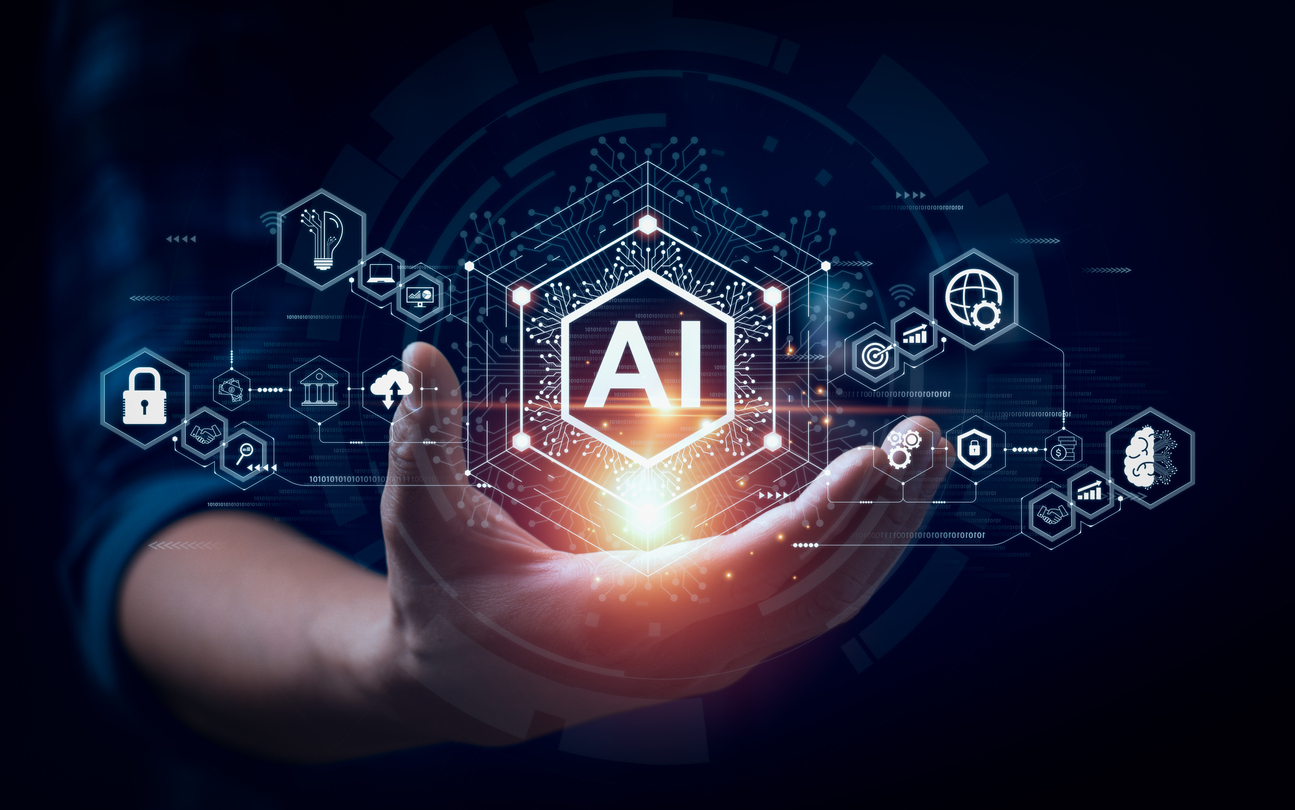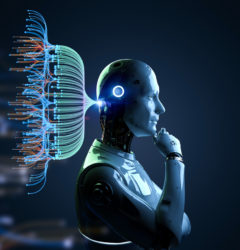27 Jun

The development of software and web solutions is constantly evolving in order to adapt to the trends of the modern world. Developers are seeking to adjust their development processes to make them faster, more efficient and less error-prone.
Artificial Intelligence (AI) offers a whole range of technology and capabilities that can help make the entire development process even more efficient.
AI as an assistant to development
In software development, artificial intelligence can be regarded as an assistant rather than the actual executive component of the process. This is due to a simple reason – AI is not yet able to think independently in extended terms and is only capable of completing tasks it has been set.
Nowadays, there are already a number of software tools from companies such as Google, IBM or Microsoft that have multiple functions. We summarised these in our last article, and this time around, we want to show you how these tools can be helpful in different parts of the process.
They can improve work productivity, find reference documentation and sources of information, but also check or design various code components.
Stages of development where AI can help
So let’s divide the process of using AI in development into sequential steps.
1. Planning
The first and most important phase in software development requires you to understand the aim of the project, identify the requirements, set a budget and plan the timeframe. This also determines the selection of the solution and technology the project will be based around.
Right here is where you can leverage AI tools, which usually have access to a lot of data. Based on this data, AI can recommend appropriate tools, procedures or documents to the developer. It is then up to the developer to choose the most appropriate ones for the project.
One of these tools, for example, is Smart Guidance from OutSystem, which offers a contextual search that will show you all available documentation, blogs, forums or training materials for your problem.
2. Design
In this stage, AI can help by offering appropriate data analysis tools and design recommendations. A tool like Microsoft’s Sketch2Code uses machine learning to convert hand-drawn sketches of components into HTML code.
In the same manner, AI can be helpful in the design process, for example through the well-known Figma application. Thanks to the Builder.io plug-in, you can obtain design suggestions for your interface, component, or application based on appropriately structured prompts.
3. Code generation
You can also use AI when generating the code itself. Nowadays, there are many tools that use predictive models. These can learn from previous data and generate follow-up code.
Systems that use Natural Language Processing (NLP) can also write code based on a prompt in which the programmer describes what they expect from the code.
While AI is a good assistant, we do not recommend using it to write long blocks of code. AI is ideal particularly for repetitive tasks. Popular tools used are CodeBots, Codota, DeepCode, Kite, OpenAI Codex or GitHub Copilot.
4. Validation and identification of bugs
Perhaps the most beneficial function of AI in software development is code validation and bug identification. This is because machine learning algorithms can analyse code much more accurately and quickly than a programmer who has spent long hours working on the project. By scanning code, you can detect poorly created inputs or outputs, directions to non-existent databases, use of outdated functions or overly complex code that can slow down the system.
When validating code, AI compares the code against existing libraries, databases, and other sources to ensure that the code used is safe and compatible with other parts of the software.
In this way, AI can help identify bugs before the software enters the testing phase, thus increasing efficiency and reducing the cost of fixes. A commonly used tool is DeepCode, which detects bugs in a variety of languages, including Python, JavaScript, and others.
5. Testing
In the testing phase, AI can detect critical vulnerabilities in a project and locate quality or security gaps that may compromise the developing software in the future. Today’s algorithms can already simulate countless user interactions in a short period of time and detect these risks in a fraction of the time compared to manual processes.
The tools used here are Testim, TestCraft or Applitools, which all have machine learning models and can hugely improve the quality of the software.
6. Predictions
Another benefit of AI is that it can analyse large volumes of data in a short space of time, allowing it to predict possible future events. Predictive analytics can thus help detect potential problems before they occur. The same is true with the individual functions of the software solution.
This is because AI algorithms analyse user behaviour in real time, from which they can deduce which features will be used more frequently than others (or possibly even overused). This is an important insight for developers when it comes to further iterations of the software solution.
Disadvantages of using AI in software development
When using AI in software development, it’s important to remember that AI is not infallible, and without an expert, it can do more harm than good. Using AI to develop solutions also brings with it a few drawbacks that need to be taken into consideration.
- AI is based on data which may not always be relevant, so it needs to be verified for accuracy.
- Unless the generated code clearly describes the process by which it arrived at a solution, AI may make iterations and maintenance of the software in the future more difficult.
- The use of AI tools can increase the budget, so detailed costing at the beginning of the project is crucial.
- AI algorithms require significant computing power and resources, which can put a strain on some organisations. That is why the selection of appropriate solutions is essential.
AI is a great help – in the right hands
If you would like to discuss further options and practices for using AI in development with our specialists, please arrange a consultation and we will be happy to help you. If you would also like to enhance your team with experts in these processes, you can benefit from supplementing it with our specialists. If, instead, you’d prefer to leave the entire process to us, we can take care of the whole software development task for you, from start to finish.







